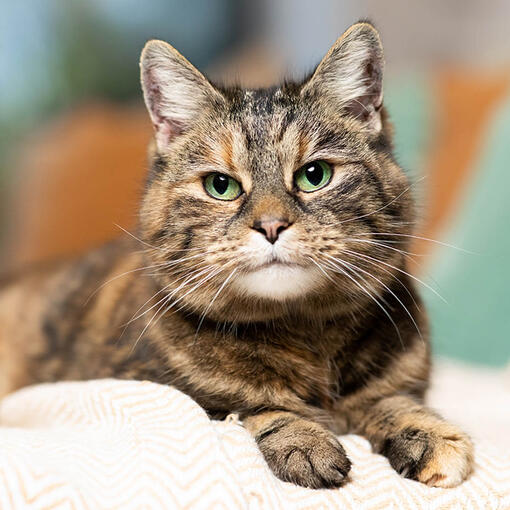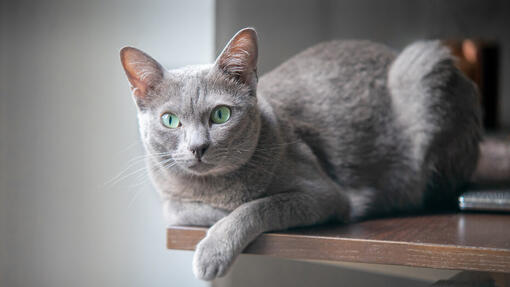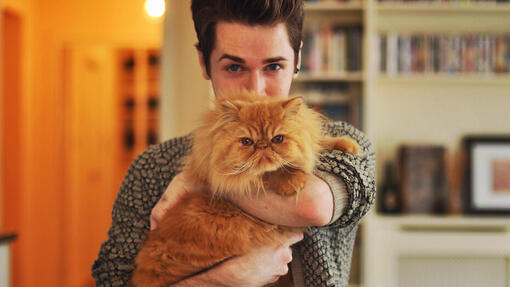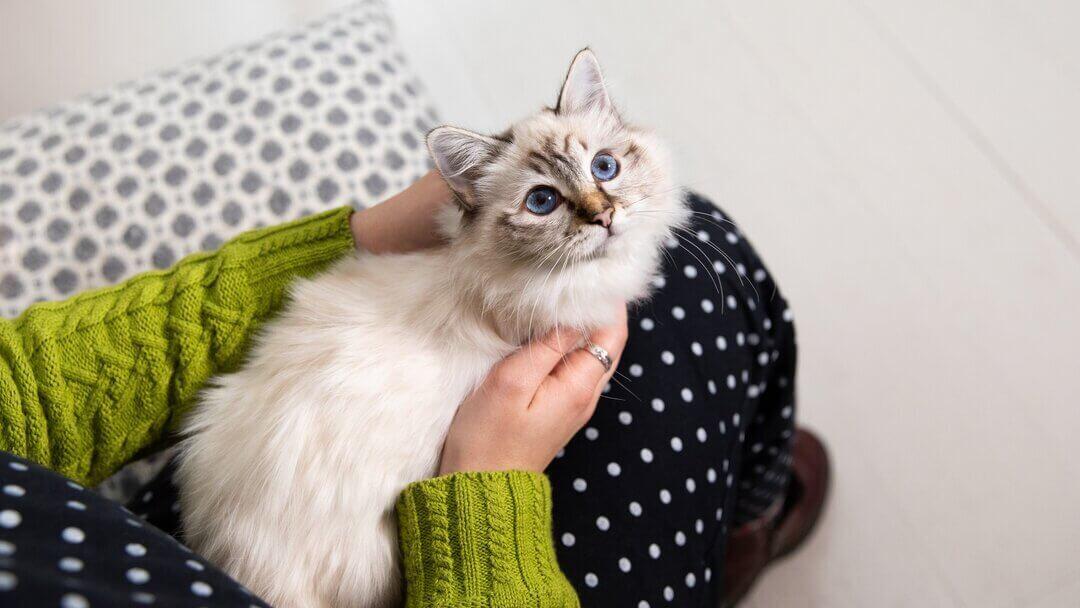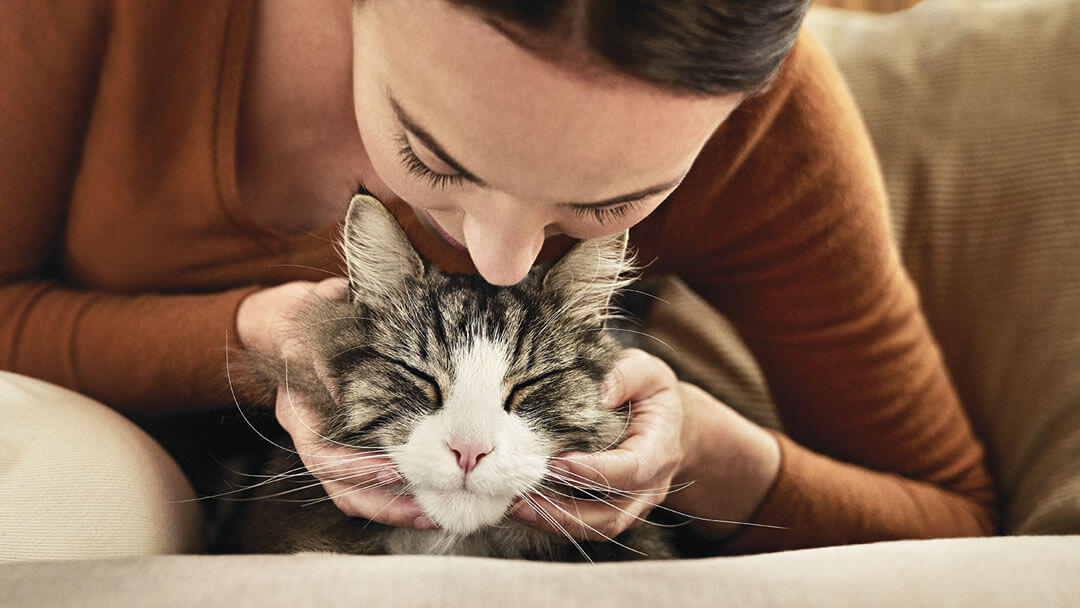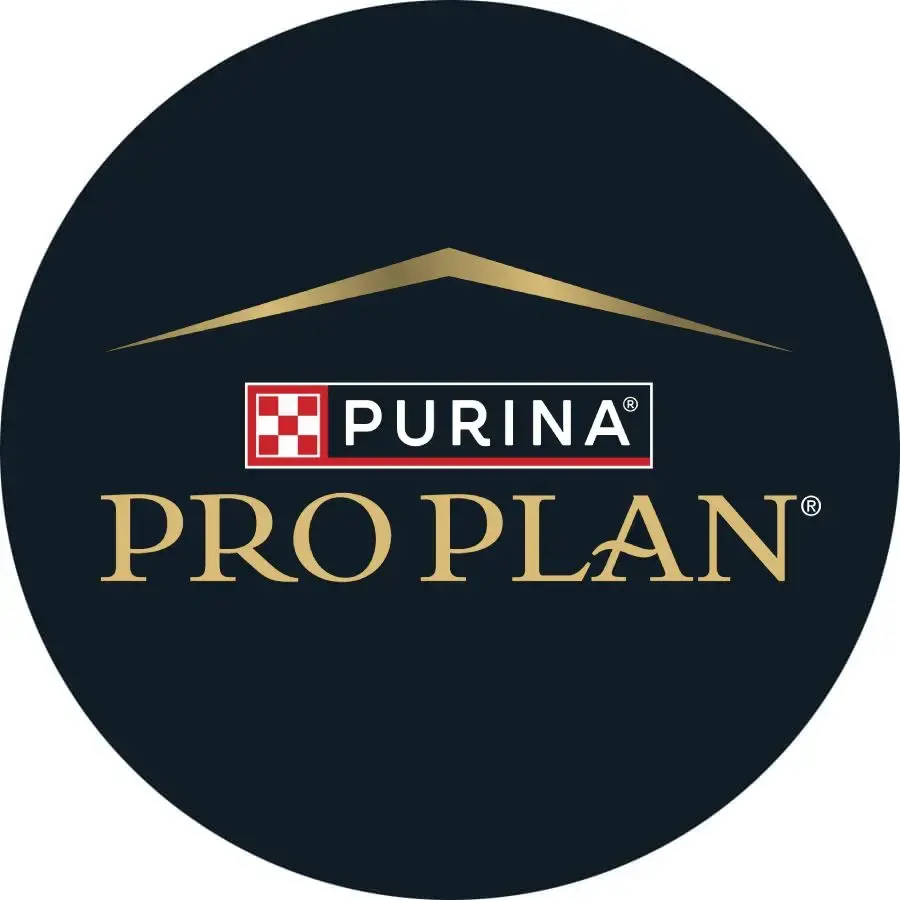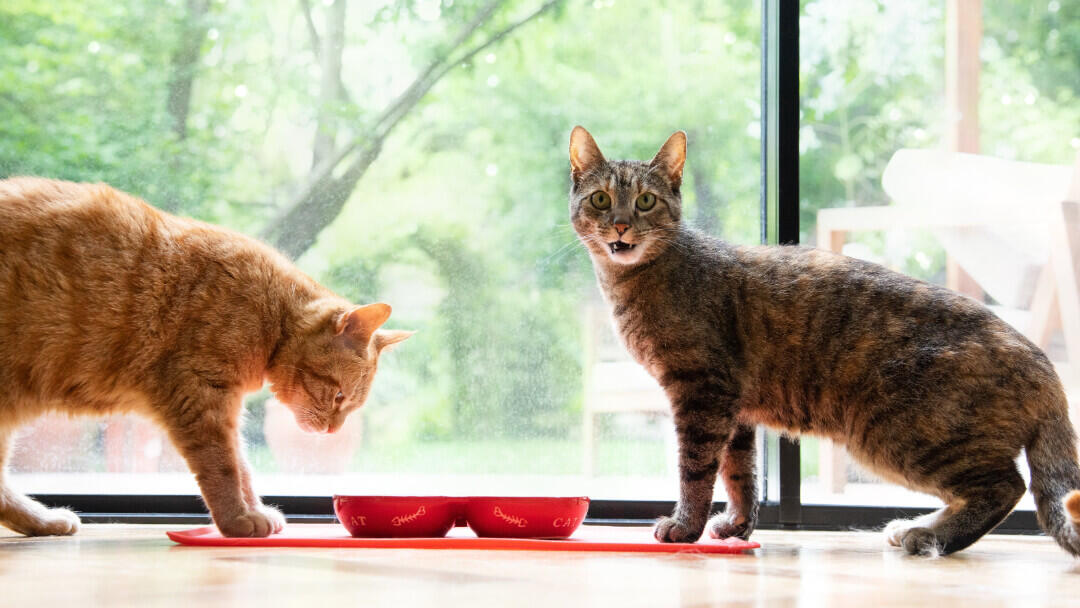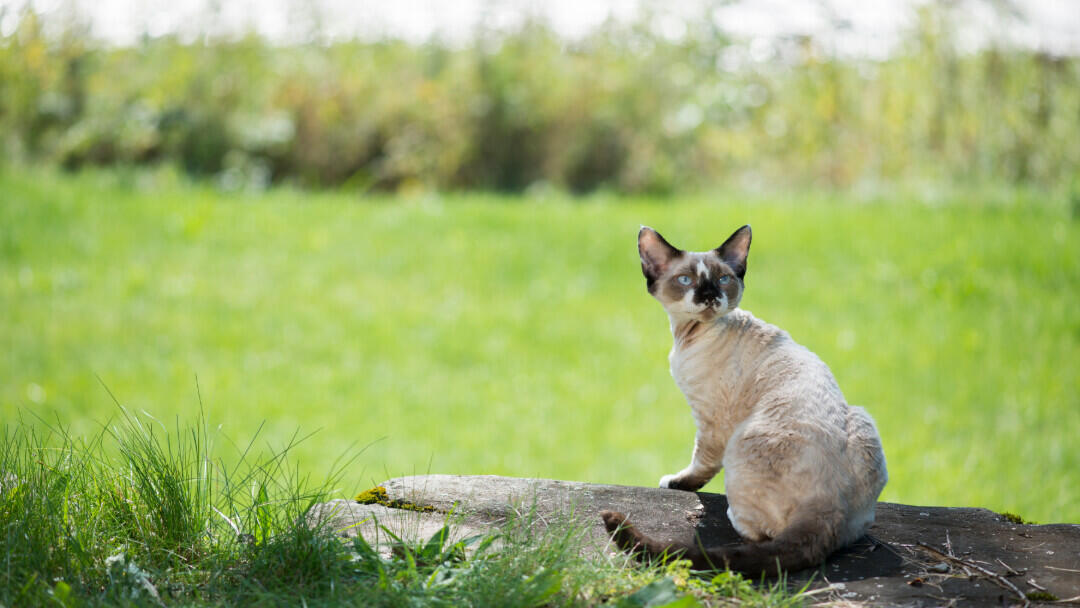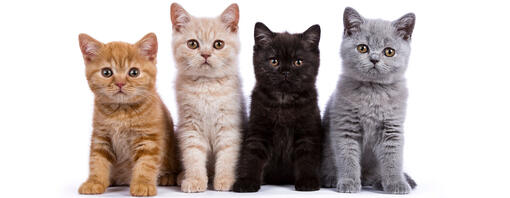
Cats are a popular choice for many pet owners, often because they have a reputation for being somewhat self-sufficient and therefore needing less attention and company from their owners.
While this may be true for some cats, it is certainly not true for all - in fact cat temperaments, activity levels and personalities are hugely varied across the different breeds and types, as well as between individuals.
While the good old British moggy has been a stalwart of reliable household pets for centuries and remain a great choice for many today, here’s a look at the pedigree types with some clarification of what the various terms you will see as you search for your ideal feline companion actually mean.
What is a pedigree or a purebred cat?
A pedigree cat is a cat that has a documented family tree, recognised as accurate by one of the registration organisations, such as the GCCF (Governing Council of the Cat Fancy).
A purebred cat is a cat whose parents, grandparents and great grandparents, are all of the same breed, however if they do not have a documented pedigree or family tree, recognised by a registration organisation, they might be a purebred but they are not ‘pedigree’ cats.
It’s also important to note that for genetic health reasons, some breeds of cat will have approved outcross breeds – for example, the Selkirk Rex can be outcrossed to the British Shorthair or the Persian. This means the gene pool available for these cats is much wider than it would otherwise be. It also means however, that as few as four generations back, the purebred, pedigree Selkirk Rex in your lap, may have a Persian or British Shorthair relative.
This is only really important if you want to breed, but it is significantly different to the system used to register pedigree dogs, which is far more familiar to most people.
Cat Registration Organisations
There are a number of organisations that will register pedigree cats around the world, some of them work closely with others, some of them stand alone. The level of interest each has in the genetic health of cats also varies. In this article the cat registration organisation referred to is the GCCF as this is the British organisation, and also the one with arguably the highest welfare standards. For example, they do not recognise nor register cats with inherent health issues, such as Munchkins (dwarfism) or Scottish Folds (osteochondrodysplasia).
The GCCF holds a database of registered cats, all the details on the breed standards, breeding policy, accepted out-crosses if there are any, health related information and governs cat showing under their own rules. Other registries will do similar, though the rules themselves may vary slightly.
What is the difference between pedigree, mixed, and crossbred?
This can get a little complicated, because most registries including the GCCF will register (although on a separate register) outcrossed cats, to improve and widen gene pools. So a cat that is a crossbreed, for example the Selkirk Rex x British Shorthair, could have a pedigree (documented and accepted as accurate family tree) and be registered with the GCCF, but not be a purebred cat and would not be eligible to show.
In general, however, mixed breed is a term typically used where one or both parents are of unknown ancestry.
Cross-bred is the term used for cats where both parents are of known breeds, and as above, these may or may not have a documented pedigree.
Be aware that many people will use the terms ‘mixed’ and ‘cross breed’ interchangeably.
Can pedigree cats have health issues?
All animals can have health issues, and while it is commonly assumed that cross bred or mixed breed animals are less prone to these, that isn’t strictly true. Where two animals of different breeds carry the same genes for the same health issues, the risks are the same as two animals of the same breed, carrying the same genes.
With pedigree, registered cats, the difference is registries and breeders are working to identify and eradicate genes that cause health issues, and those health issues are well documented and can be tested for. This may mean some breeds have a list of potential health problems, and some don’t, however this may also be a matter of numbers – the older and more numerical the breed, the more data there is. Rarer breeds with fewer numbers may have fewer health issues or, those health issues just haven’t been spotted yet.
Some cat breeds have inherent health issues – for example, the Scottish Fold with their strikingly unusual folded forward ears. As adorable as they look, they only have these ears as a result of a condition called osteochondrodysplasia which is a developmental abnormality that affects cartilage all through the body. This is what causes the folded ears in this particular breed, though it also affects other parts of the body, particularly the limb bones, causing distortion of the bones, and severe arthritis. The effects can be seen as early as 7 weeks, causing chronic pain and crippling lameness. There is no cure, and the only way to eradicate the disease is to stop producing cats with folded ears.
Some of the other cats not recognised by the GCCF (though may be recognised by others) are:
Munchkins – all Munchkins suffer from dwarfism – probably pseudoachondroplasia leading to a normal sized head but shortened limbs, which predisposes them to health and mobility problems.
Pixie Bob – the breed standard requires Pixie Bobs to be polydactyly, which means they have limb abnormalities, usually seen as extra ‘thumbs’ and toes and even extra pads.
Savannah – the Savannah is a recent breed, creating by crossing wild species with domestic, the F1 generation of which still requires a Dangerous Wild Animals Licence in the UK.
Types of pedigree/purebred cats
There are many breeds of pedigree cats but they all come under one of these main types, and those within a type are usually somewhat related and may be on the approved outcross list for others within that type. It’s also important to point out that the classification of cat breeds can vary across different associations.
These groups are unfortunately not quite as self-explanatory as the dog breed groups are, as because cats were never bred to do a specific job, they really describe coat or body type rather than behaviour or temperament. Having said that, some types can fairly predictably be more active, or for one reason or another be higher maintenance than others!
Furthermore, some breeds form a group of their own, under one or more of these types. For example, the Asian Group comes under the Burmese type and includes the Asian of all colours plus the Burmilla, Bombay, and Tiffanie.
Semi-Long-hairs
These are elegant cats with medium-length, silky coats that require regular grooming, known for their affectionate and gentle nature. They often have thick undercoats or feathered tails, giving them a soft, luxurious appearance.
British
British cats are sturdy and round-faced with dense, plush fur, often admired for their calm, easy-going temperament. As examples, the British Shorthair has a dense, plush coat, and the Manx cat has a double coat that’s composed of a soft undercoat and a glossy, coarser topcoat. They’re typically quiet companions who enjoy lounging but still appreciate gentle play.
British (Shorthair & Longhair)
Devon Rex
Cornish Rex
Foreign
Foreign breeds are slender and agile, characterized by sleek bodies and an energetic, curious personality. Their athletic build makes them excellent climbers and explorers, always eager for mental stimulation.
Abyssinian
Aztec
Sokoke
Siamese & Oriental
These cats are generally sleek, vocal, and outgoing, with slender bodies, striking eyes, and lively, intelligent personalities that thrive on human interaction. They’re famous for their chatty, opinionated nature and strong desire to be the centre of attention.
Oriental (Shorthair & Longhair)
Within each type there are a set of characteristics you can reasonably expect, though some types are more varied than others.
Semi-Long-hairs are the most diverse, from the dainty and elegant Somali to the huge and impressive Maine Coon, but all are semi-long coated
British type cats are all fairly solid, rounded and chunky cats but with various coat types – as examples, the British Shorthair has a dense, plush coat, and the Selkirk Rex has a semi-long and extremely fluffy, curly or wavy coat.
Foreign types are another big group of pedigree cats, covering the petite and smooth Egyptian Mau to the tall and angular, curly coated Devon Rex. There is a variety of build and coat type here.
The Burmese group are more moderate in build, neither extremely lean and lithe, nor chunky and robust, with Asian and Australian Mists at the more rounded and cuddly end of the scale and Tonkinese at the more angular end.
Siamese & Orientals are perhaps the most striking type, these are the tall, very angular, large eared and narrowly built cats. There are both the traditional short haired versions here and the newer long coated Oriental Longhair and Balinese. Often talkative!
Finally, unmistakably the Persian type, covering the traditional short faced, long coated Persian that everyone thinks of, but also the Exotic Shorthair, a Persian without such extravagant fur. Here’s where you will find the sub-types of Persian including the Chinchilla.
These breeds all come with their own breed traits and personalities, so if you’re not sure where to start, making a list of your ‘must have’ features and of course your ‘must not have’s as well is a useful way forward. If you don’t like a demanding and vocal cat, then the loud voiced Siamese is probably not for you. If you’re not keen on the idea of a rather decorative and sedentary kitty, then avoid the Persian types. If you don’t want a cat who bring chaos to your house and is the scourge of the local wildlife (and neighbourhood dogs!) without constant enrichment and pseudo hunting opportunities, avoid the Bengal.
To help you work out which cat you would prefer and want to research further, take our Cat Breed Selector quiz and find your perfect match!



